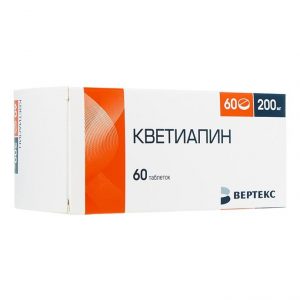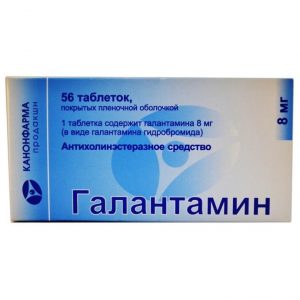Description
Release form
coated tablets
Packing
100 pcs.
Pharmacological action
Truxal is an antipsychotic derived from thioxanthene. It has antipsychotic, pronounced sedative and moderate antidepressant effects.
Pharmacodynamics
The antipsychotic effect of Truxal is associated with its blocking effect on dopamine receptors. The antiemetic and analgesic properties of the drug are also associated with the blockade of these receptors. Truxal is able to block 5-HT2 receptors, 1 – adrenergic receptors, and H1 – histamine receptors, which determines its adrenergic blocking, hypotensive and antihistamine properties.
Pharmacokinetics
Oral bioavailability of chlorprotixen is approximately 12%. Chlorprotixen is rapidly absorbed from the intestine, the maximum concentration in the blood serum is reached after 2 hours.
The elimination half-life is about 16 hours. Chlorprotixen crosses the placental barrier and is excreted in breast milk in small amounts. Metabolites do not have antipsychotic activity, excreted in feces and urine.
Indications
Truxal is a sedative antipsychotic with a wide range of indications, which include:
psychoses, including schizophrenia and manic states, which occur with psychomotor agitation, agitation and anxiety,
, hangover, alcohol withdrawal, and symptoms confusion in elderly patients,
impaired behavior in children,
depressive states, neurosis, psychosomatic disorders,
insomnia,
pain (in combination and with analgesics).
Contraindications
CNS depression of any origin (including those caused by the use of alcohol, barbiturates or opiates), coma, vascular collapse, blood diseases, pheochromocytoma.
Hypersensitivity to the drug.
Trucksal should not, if possible, assigned to pregnant women and during breastfeeding.
Special instructions
Truxal should be prescribed with caution to patients suffering from epilepsy, parkinsonism, with severe atherosclerosis of the cerebral vessels, with a tendency to collapse, with severe cardiovascular and respiratory failure, with severe impairment of liver and kidney function, diabetes, hypertrophy, sugar prostate gland.
The use of Truxal can lead to a false positive result when conducting an immunobiological urine pregnancy test, a false increase in the level of bilirubin in the blood, a change in the QT interval on the electrocardiogram.
During treatment with Truxal, it is recommended to refrain from drinking alcohol, to avoid increased insolation.
Reception Truksal has a negative impact on activities that require a high speed of mental and physical reactions (for example, driving vehicles, servicing cars, working at heights, etc.).
Composition
1 coated tablet contains:
active substance:
chlorprotixene hydrochloride 25 mg
excipients:
corn starch,
lactose monohydrate,
copovidone, glycerol 85%,
microcrystalline cellulose
srldkl srlkldp,
strdlpd,
krdrd, srdlkrdkpd brown (E 172 E 171) RM 1030
Dosage and Administration
Psychoses, including schizophrenia and manic conditions. Treatment begins with 50-100 mg / day, gradually increasing the dose to achieve the optimal effect, usually up to 300 mg / day. In some cases, the dose can be increased to 1200 mg / day. The maintenance dose is usually 100 to 200 mg / day.
The daily dose of Truxal is usually divided into 2 to 3 doses, taking into account the pronounced sedative effect of Truxal, it is recommended to prescribe a smaller part of the daily dose in the daytime, and most of it in the evening.
Hangover withdrawal syndrome in alcoholism and drug addiction.
The daily dose, divided into 2 to 3 doses, is 500 mg. The course of treatment usually lasts 7 days. After the disappearance of manifestations of withdrawal symptoms, the dose gradually decreases. A maintenance dose of 15 – 45 mg / day allows you to stabilize the condition, reduces the risk of developing another binge.
In elderly patients, in the presence of hyperactivity, irritability, agitation, confusion, 15 to 90 mg / day is prescribed. The daily dose is usually divided into 3 doses.
In children, Truksal is prescribed at the rate of 0.5 – 2 mg per 1 kg of weight to correct behavioral disorders.
Depressive states, neuroses, psychosomatic disorders. Truxal can be used for depression, especially combined with anxiety, stress, as an adjunct to antidepressant therapy or alone. Truxal can be prescribed for neurosis and psychosomatic disorders, accompanied by anxiety and depressive disorders, up to 90 mg / day. The daily dose is usually divided into 2-3 doses. Since Truxal does not cause addiction or drug dependence, it can be used for a long time.
Insomnia. 15-30 mg in the evening 1 hour before bedtime.
pain. Truxal’s ability to potentiate the effects of analgesics can be used in the treatment of patients with pain. In these cases, Truxal is prescribed together with analgesics in doses of 15 to 300 mg.
Side effects
Drowsiness, tachycardia, dry mouth, excessive sweating, or difficulty in accommodation. These side effects, usually occurring at the beginning of therapy, often disappear as it continues. Orthostatic hypotension may occur, especially when using Truxal in high dosages.
Dizziness, dysmenorrhea, skin rashes, constipation are rare. Extrapyramidal symptoms are especially rare.
Isolated cases of lowering the seizure threshold, the occurrence of transient benign leukopenia and hemolytic anemia are described. With prolonged use, especially in high doses, can be observed: cholestatic jaundice, galactorrhea, gynecomastia, weakening potency and libido, increased appetite, weight gain.
Drug Interactions
The inhibitory effect of chlorprotixen on the central nervous system can be enhanced when taken with ethanol and ethanol-containing drugs, anesthetics, opioid analgesics, sedatives, hypnotics, antipsychotics.
The anticholinergic effect of chlorprotixen is enhanced with the simultaneous use of anticholinergics, antihistamines and antiparkinsonian drugs.
The drug enhances the action of antihypertensive drugs.
The simultaneous use of chlorprotixen and adrenaline can lead to arterial hypotension and tachycardia.
The use of chlorprotixen leads to a decrease in the threshold of convulsive activity, which requires additional dose adjustment of antiepileptic drugs in patients with epilepsy.
The ability of chlorprotixen to block dopamine receptors reduces the effectiveness of levodopa.
Extrapyramidal disorders may occur with the simultaneous use of phenothiazines, metoclopramide, haloperidol, reserpine.
Overdose
Symptoms. Drowsiness, hypo- or hyperthermia, extrapyramidal symptoms, convulsions, shock, coma.
treatment. Symptomatic and supportive.
As soon as possible gastric lavage should be performed, the use of a sorbent is recommended.
Measures should be taken to maintain the respiratory and cardiovascular systems.
Do not use adrenaline, as this can lead to a subsequent decrease in blood pressure.
Seizures can be controlled with diazepam, and extrapyramidal symptoms with biperiden.
Storage Conditions
At a temperature not exceeding 25 ° C.
Expiration
5 years.
Terms leave through pharmacies
In retseptu
lekarstvennaja form
tablets
H. Lundbeck A / O, Denmark




